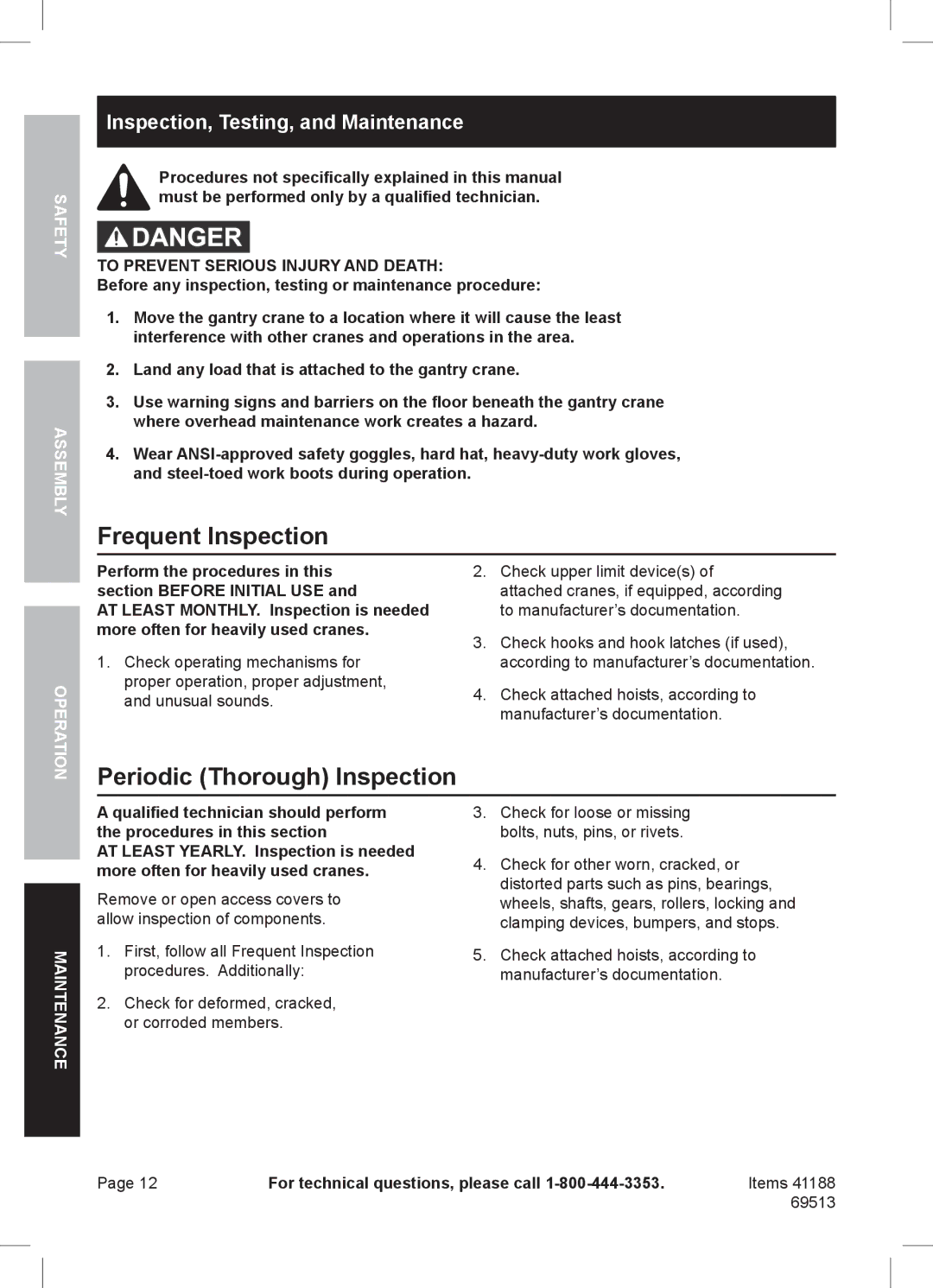41188, 69513 specifications
Harbor Freight Tools is known for providing high-quality tools and equipment at affordable prices, catering to both professional tradespeople and DIY enthusiasts. Among their extensive product lineup, the Harbor Freight Tools 69513 and 41188 models stand out due to their robust features and innovative technologies designed for superior performance and user convenience.The Harbor Freight 69513 is a 12-inch sliding compound miter saw, which excels in precision cutting and versatility. One of its main features is the double bevel design, allowing users to make angled cuts in both directions without the need to flip the workpiece. This is particularly beneficial for crown molding and other intricate woodworking projects. The saw is equipped with a powerful motor that delivers consistent performance and can handle a variety of materials, from hardwood to softwood and even some composite materials.
The laser guide system integrated into the 69513 enhances accuracy by providing a visual cutting line, helping users achieve precise cuts every time. Additionally, the unit features a large adjustable table that provides ample support for larger pieces, coupled with extension arms that further enhance its versatility. The saw also includes a dust bag to help maintain a cleaner workspace, demonstrating Harbor Freight’s commitment to user convenience.
On the other hand, the Harbor Freight 41188 is a durable and efficient 21-gallon wet/dry vacuum designed for heavy-duty cleaning tasks. One of its standout technologies is a powerful suction capability, which efficiently handles both liquid and solid debris, making it ideal for construction sites or home workshops. It features a robust motor that ensures longevity and high performance, along with a convenient, portable design for ease of movement.
The 41188 comes with a variety of accessories, including multiple hose attachments, making it versatile for different applications. Its large capacity tank minimizes the need for frequent emptying, while built-in safety features, such as a float mechanism, prevent overflow when handling liquids. Furthermore, the vacuum's easy-to-clean filter is designed to withstand heavy use, ensuring that it remains efficient over time.
In summary, the Harbor Freight Tools 69513 and 41188 models exemplify the brand's commitment to quality and innovation. Whether you're looking for precision cutting or heavy-duty cleaning solutions, these products deliver reliability and performance that meet the needs of both professionals and hobbyists alike.

